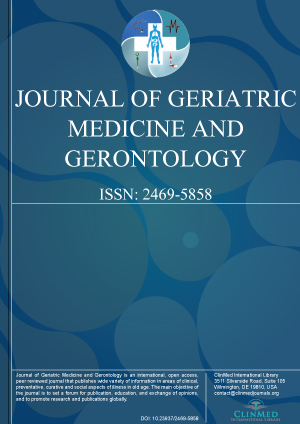Open Access DOI:10.23937/2469-5858/1510105
An Ounce of Prevention: Reducing the Risk of COVID-19 Transmission in Long-Term Care Facilities
Robert J Fischer, MD, Kimberly K Morris, MD, Luke A McCorkel, BA, MA, Steven M Case, RN, BSN, CCM, ACM-RN, Hieu H Pham, RN, BSN and Brian G Henneman, PE
Article Type: Original Article | First Published: December 05, 2020
Determine LTCF risk factors for a COVID-19 outbreak and recommend strategies for closing gaps in facility preparedness through a multidisciplinary team assessment carried out on site. Data was obtained during visits to 14LTCFs, completion of a standard assessment tool through interviews with site staff and leadership and tours of the facility campus. In all five dimensions of preparedness (staffing, professional medical support, infection control, engineering controls and testing), the degree of...
Open Access DOI:10.23937/2469-5858/1510104
Delirium as an Initial Presentation of COVID-19: Implications in Diagnosis and Possible Long-Term Effects
Daniel J Greenberg, DO and Christine Carosella, MD
Article Type: Case Report | First Published: December 05, 2020
Most patients with coronavirus disease 2019 (COVID-19) experience fever, cough, and malaise. Neurologic manifestations are receiving more recognition. One systematic review found the most frequent findings included headache (20.1%) and smell and taste dysfunction (59.2% and 50.8%, respectively). Impaired consciousness, defined as agitation or confusion, occurred 5.1%, and was more common in severe or critical patients (11.9%). Further, cases of asymptomatic infection may be as high as 40% to 45%...
Open Access DOI:10.23937/2469-5858/1510103
Werner Syndrome Helicase (WRN) Gene Variants and Cancer in Japanese Elderly: An Autopsy Study
Yuan Zong, Masashi Tanaka, Masaaki Muramatsu and Tomio Arai
Article Type: Case Study | First Published: November 25, 2020
Werner Syndrome (WS) is a rare autosomal recessive disorder characterized by symptoms of premature aging, including elevated risk of malignancies. The causative WRN gene encodes a DNA helicase, which maintains the integrity of the human genome. While WS patients have functional null mutations in both alleles of the WRN gene, phenotypes of heterozygote carriers have not been described. Cellular assays showed that heterozygote carriers also have genetic instability to a lesser extent. To this end ...
Open Access DOI:10.23937/2469-5858/1510102
Epidemiological Characteristics of SARS-CoV-2 in Elderly Mexican Population: A Perspective of Mortality
Noelia Carolina Del Castillo Salazar, Martin Luis Figueroa Velásquez, Jesús Ojino Sosa-García, and José Ángel González Sánchez
Article Type: Original Article | First Published: November 21, 2020
We analyzed the open data of COVID-19 from the Mexican government from March 19th to June 19th, 2020. A total of 141,009 cases were included, where 7,394 patients were aged over 65 years with a positive RT-PCR test for SARS-CoV-2. We investigated symptoms, comorbidities, pneumonia diagnosis, the need of hospitalization, orotracheal intubation, and intensive care unit [ICU] admission. The data were analyzed with SPSS version 25.0 for Windows. In a population aged over 65 years, 57% (n = 3,899) we...
Open Access DOI:10.23937/2469-5858/1510101
Gait Disorders in Older Adults - A Structured Review and Approach to Clinical Assessment
Joseph O Nnodim, MD, PhD, FACP, AGSF, Chinomso V Nwagwu, MD and Ijeoma Nnodim Opara, MD, FAAP
Article Type: Structured Review | First Published: October 23, 2020
Human beings propel themselves through their environment primarily by walking. This activity is a sensitive indicator of overall health and self-efficacy. Impairments in gait lead to loss of functional independence and are associated with increased fall risk. This structured review examines the basic biology of gait in term of its kinematic properties and control. It describes the common gait disorders in advanced age and proposes a scheme for their recognition and evaluation in the regular ambu...

